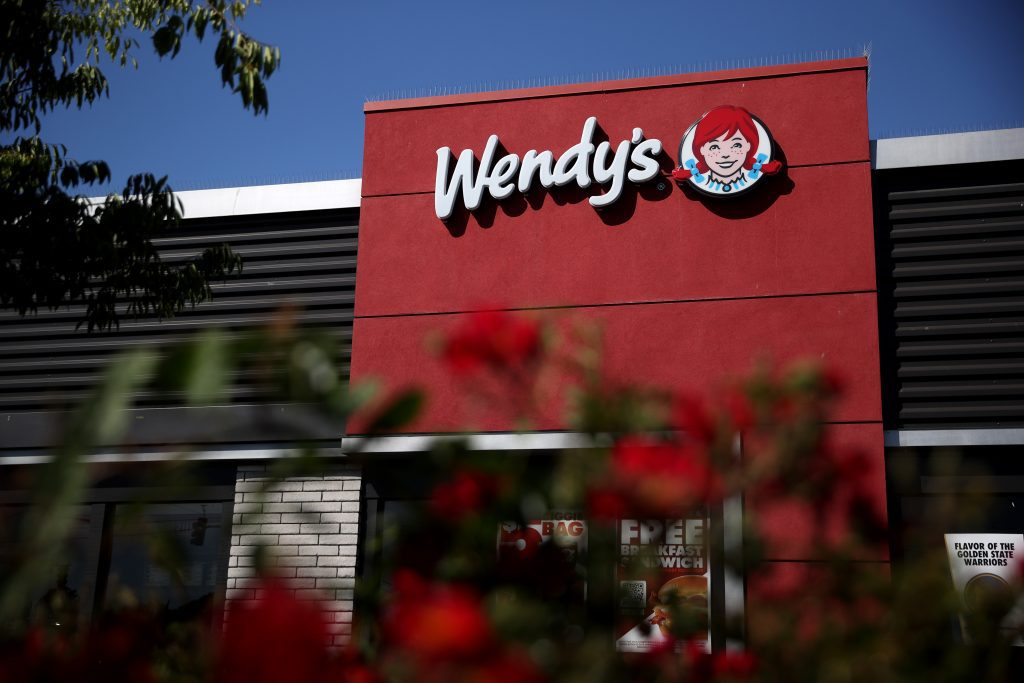By Anna Helhoski | NerdWallet
When people found out that Wendy’s would start increasing prices in 2025, there was a strong negative reaction. After that, there was a lot of media coverage, angry customers, jokes on late-night TV, and many spicy memes.
It seemed like the fast food chain’s supposed evil plans were immediately rejected. However, if increasing prices for Frosty and fries was actually what Wendy’s was planning, it might have been dead on arrival. Wendy’s quickly clarified that it wasn’t surge pricing after all; it was actually using “dynamic pricing.” That difference is important, but it’s still business jargon that most people don’t understand.
“I think they didn’t think through how people would interpret that phrase,” says Robert Shumsky, a professor at Dartmouth University’s Tuck School of Business.
Here’s the difference: Surge pricing uses real-time supply and demand data to only raise prices. If you’ve ever tried to get a rideshare during rush hour, you’ve experienced how surge pricing raises the cost of your fare. Dynamic pricing, on the other hand, uses real-time supply and demand data to change prices up or down.
Rather than raising prices when demand is high, as the public assumed, Wendy’s says it plans to use artificial intelligence algorithms to lower prices during slow times, according to a statement from Wendy’s to NerdWallet on Feb. 27.
All of this is to say that what Wendy’s is doing isn’t all that new. Consumers are already paying for goods and services set by dynamic pricing in lots of industries — including food and hospitality.
However, technology is making it much easier to change prices in real-time using an algorithm. And the availability of that resource has its appeal to businesses that hadn’t previously been able to price based on real-time factors.
On the surface, the most puzzling piece of the reaction to Wendy’s is that its competitors — McDonald’s and Burger King — already do dynamic pricing. They, along with Starbucks, offer promotions during slow parts of the day and offer perks (and even lower prices) for ordering via apps.
The lesson of Wendy’s is that just because businesses can do that, it doesn’t mean customers will like it — especially if they’re more aware that it’s happening.
“I think the big question now is whether there’s a change in consumer acceptance, over time,” says Shumsky. “When it’s rolled out in an industry, either it’s going to be rejected or it’s kind of become the norm, right? It became the norm in some industries, but as you saw from the reaction to Wendy’s, sometimes that doesn’t work very well.”
Dynamic pricing is all around you
Anyone who has ever booked an airline ticket or a hotel room has already paid an amount set by dynamic pricing. These industries were, and still are, the dominant space for the model.
But those prices are primarily set based on seasonal factors. For example, more people travel in the summer months, so airline tickets are more expensive in the summer. Gas prices go up on holiday weekends when more people will be on the road. Electricity is more expensive when it’s hot out because more people are using air conditioning. Ski lift operators can lower prices when conditions are subpar.
Other factors affecting pricing include how long you wait to book a flight, as the price increases the longer you wait. Additionally, hotel and Airbnb bookings tend to be more expensive on weekends. Theme parks like Disney World and Disneyland determine prices based on historical data, such as wait times at the Jungle Cruise during peak months.
However, the algorithms used in dynamic pricing are now more advanced, and AI can analyze a greater amount of data than before. Data can now be collected about the current weather rather than just typical seasonal weather. Algorithms can also consider the volume of customers in real time instead of relying solely on long-term consumer patterns.
E-commerce has been utilizing dynamic pricing for a long time. For example, Amazon automates pricing based on real-time data about consumer behavior, supply, demand, and competitor offerings. This extensive data analysis allows for swift price adjustments.
A visible case of dynamic pricing is seen when ordering food through delivery apps. Restaurants can change the prices listed on apps like DoorDash or Seamless at any time. The same applies to grocery delivery. Typically, prices on a third-party delivery service are higher due to the fees charged to restaurants, as well as other supply-and-demand factors.
How technology makes dynamic pricing even more feasible
The use of more advanced algorithms makes it easier and more efficient to implement dynamic pricing. Consequently, businesses using AI-enabled dynamic pricing may have a better idea of what they should charge at any given time. However, it also means that consumers may have less accurate expectations regarding the prices they will be charged.
Restaurants have historically experienced minor price fluctuations, like happy hours, according to Zach Brown, assistant professor of economics at the University of Michigan. Unexpected price changes are relatively new for restaurants, and customers could be frustrated and confused to find an item priced higher than expected. Brown illustrates this with the example of a restaurant that utilizes dynamic pricing for a $10 item, charging $8 at times and $12 at others depending on demand.
Digital menus have made price changes even simpler. For example, many restaurants have continued to use QR-coded menus introduced for sanitation during the pandemic because it is much easier to revise an online menu than to print a new one. The introduction of digital menu boards at Wendy’s next year will enable its dynamic pricing implementation.
“Historically, the problem has been the lack of available technology,” says Brown. “You can program software to handle pricing, eliminating the need for a manager to set prices manually.”
The transition to changing prices digitally instead of manually has been influential for major chain retailers. Stores like Kroger and Walmart have implemented electronic shelf labels that allow for rapid price adjustments.
“At grocery stores they used to manually put tags on items,” Shumsky says. “Now they can change them electronically, which makes it easier to update prices in real time. There are also better algorithms to monitor demand, supply, and adjust prices in real time.”
According to Brown, some people end up paying less while others end up paying more. “You have winners and losers,” he says. “These changes usually benefit informed consumers who check prices online and take advantage of lower prices.”
AI doesn’t just set prices, but also influences shopping habits and promotes cross-selling, says Shumsky. E-commerce brands typically use algorithms to personalize advertisements and sales, as seen on Instagram. Brick-and-mortar retail is trying to catch up, and the same AI tech used for dynamic pricing can guide customers to products and deals.
For instance, the Kroger shopping app's “Store Mode” offers personalized recommendations and helps customers find items. Wendy’s AI technology can also suggest products based on factors like the weather, such as recommending a cool Frosty on a warm summer day.
Brown expresses concern that AI-driven algorithms are becoming more efficient at optimizing results. “We need more transparency about what these algorithms are doing,” he says. “Some pricing algorithms may benefit consumers, while others may not.”
What is the function of AI-driven algorithms in dynamic pricing?
Ashwin Kamlani, co-founder and CEO of Juicer, an AI-driven dynamic pricing company, explains that AI simplifies the analysis of large amounts of data, but the results are mostly experimental. “We are working on making the forecast and result analysis more efficient and smarter,” he says.
Kamlani explains that AI can identify repeatable patterns in historical data. “We need to look for consistent patterns in the way a product is ordered over time to predict with confidence that a restaurant will sell a certain number of chicken wings on DoorDash on a specific day and time,” he says.
AI can go beyond just analyzing chicken wings sales and consider external factors that may have influenced the sales. Kamlani reveals, “Our solution predicted sales based on factors such as the weather and events in the area, and we evaluate the accuracy of our predictions to continuously improve our forecasts.”
Comparing rivals' strategies is expected to have an even larger impact on deciding what prices to establish at what time and where.
What is the future of changing prices based on demand?
According to Shumsky, businesses need to overcome a basic obstacle: customer expectations.
According to Shumsky, from a customer perspective, having consistent prices is highly beneficial: People want to know the cost of something in advance. Fluctuating prices can be very frustrating.
Experts suggest that most sellers will likely implement changing prices without significant negative effects — it's what buyers have come to anticipate. Brown believes that dynamic pricing is a real possibility for all online purchases in the future.
Although changing prices may be more easily applied across various industries than in the past, that doesn't guarantee it will happen. If consumers aren't accustomed to rapid price changes, they may reject the idea.
Ticketmaster, the giant in event ticket sales known for using dynamic pricing, faced criticism from the Department of Justice for its surge pricing problems in recent years, particularly for Taylor Swift and Bruce Springsteen concerts where premium ticket prices soared to thousands of dollars. Artists like Swift, Springsteen, Harry Styles, Paul McCartney, and Coldplay have the option to turn off dynamic pricing for their concerts, but they have often chosen not to.
When the movie theater chain AMC attempted to introduce its own adaptation of Ticketmaster’s dynamic pricing system last year, consumers quickly rejected it.
Despite consumer disapproval, it may not be effective if there is continued demand. Surge pricing for rideshare services like Uber and Lyft has long been criticized by users during peak times, despite the fact that, as Shumsky points out, higher fares increase the earnings for drivers, which often leads to more drivers coming out and increasing the supply, ultimately reducing prices. But let's face it, no one likes surging prices.
Last summer, Lyft CEO David Risher reportedly stated during an investor call that the company planned to discontinue its practice of surging prices because “riders hate it with a fiery passion,” but in the fall, Risher backtracked on his comments.
Even though Wendy’s denied ever mentioning “surge pricing” and denying that it would implement surge pricing, the damage was done. Cost-conscious consumers, already feeling the burden of price increases due to inflation over the past two years, were not satisfied.
Now the burger chain is seemingly apologizing by offering $1 burgers until April 10 (reportedly for March Madness, but it appears to be a public relations move). However, despite the backlash against its dynamic pricing plans, Wendy’s does not indicate that it intends to change direction: By 2025, pricing fluctuations are expected to appear on digital screens at certain Wendy's locations.
Other fast food chains may also follow suit, but Brown is interested to see how prevalent dynamic pricing will become in the restaurant industry as a whole.
Brown believes that some people get frustrated with constantly changing prices and prefer to have certainty. He thinks that certain individuals prefer going to a restaurant with a printed menu and predicts that it may take some time before upscale restaurants start using dynamic pricing, as there's a negative perception about it. However, he acknowledges that norms might change in the next 5 or 10 years.
Customers at high-end restaurants are used to paying market price for certain fish, lobster and oysters. However, they might hesitate to do the same for a roast chicken, for example.
Shumsky mentions that many service providers are less likely to adopt dynamic pricing models. He explains that many services rely on trust between providers and consumers, and changing prices could violate this trust. He also mentions that healthcare is unlikely to adopt dynamic pricing.
Shumsky emphasizes that there are certain norms that they won't violate, and although dynamic pricing hasn't reached its limit, it's unlikely to become ubiquitous.
How consumers can take advantage of dynamic pricing
Dynamic pricing can be frustrating for consumers, but it also presents an opportunity to benefit, if consumers are willing to invest time and attention.
Loyalty programs — often accessed via apps — like those offered by grocery stores, airlines, hotels and fast food chains are a convenient way to keep track of price fluctuations. Additionally, these programs usually offer perks such as points for free items and small discounts for using the app for purchases.
Consumers can also predict slower periods during the day or week when companies might offer savings. Similarly, they can anticipate higher demand and avoid making purchases during those times.
Dynamic pricing relies on timing to work. If consumers can strike at the right time, they could also reap the rewards.
More From NerdWallet
The article Wendy’s Isn’t the First: Dynamic Pricing Is Everywhere originally appeared on NerdWallet.









